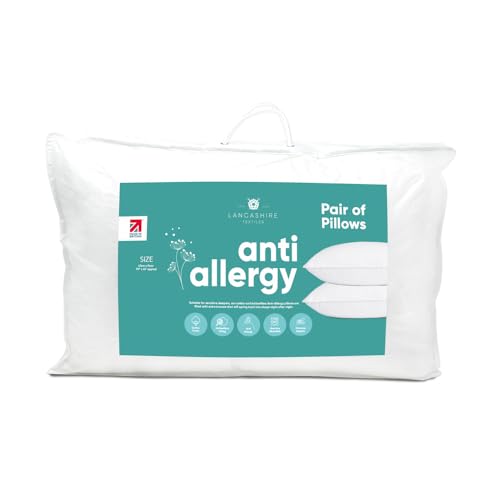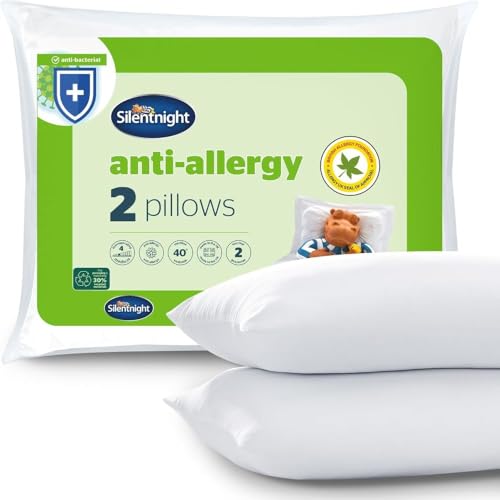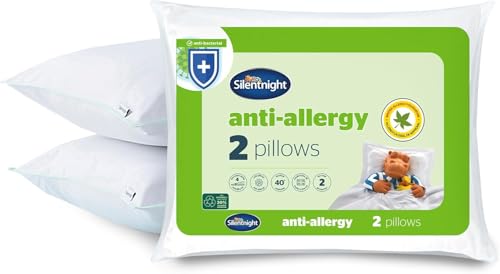Understanding Hypoallergenic Pillows: What Makes Them Special?
What Does Hypoallergenic Mean?
Hypoallergenic pillows are designed to minimize allergic reactions, making them a great choice for individuals sensitive to allergens. These pillows are typically made from materials that do not cause allergic responses in most people. This means that they are often dust mite resistant, mould resistant, and made from synthetic fibres or treated natural materials that repel common allergens. Imagine sleeping on a pillow where dust mites and mould can’t thrive – that’s the promise of a hypoallergenic pillow.
Why Choose Hypoallergenic Pillows?
Choosing a hypoallergenic pillow can greatly improve the quality of your sleep, especially if you suffer from allergies. For example, if you wake up with a stuffy nose or itchy eyes, these pillows can help provide relief. They contribute to a healthier sleep environment, allowing you to breathe easier and wake up feeling refreshed. Opting for a hypoallergenic pillow means you’re proactively taking care of your health while enjoying a good night’s sleep.
Who Should Consider a Hypoallergenic Pillow?
Allergy Sufferers
If you experience symptoms like coughing, sneezing, or a runny nose while in bed, a hypoallergenic pillow should be on your radar. It’s particularly beneficial for those with dust mite allergies or sensitivities to certain materials. Picture being able to sleep through the night without disruption from allergy symptoms – hypoallergenic pillows are designed to help make that a reality.
Asthma and Respiratory Issues
Individuals with asthma or other respiratory conditions can also benefit from hypoallergenic pillows. These pillows help reduce irritants in the environment, enabling better airflow during sleep. If you often find yourself waking up at night struggling to breathe, a hypoallergenic pillow can create a more conducive atmosphere for rest and relaxation.
General Health-Conscious Individuals
Even if you don’t have specific allergies, choosing a hypoallergenic pillow can be a wise decision for your overall health. If you’re someone who values a clean and healthy sleeping environment, these pillows can promise fewer allergens and a more hygienic option. It’s about ensuring that your sleep sanctuary is as pure and restful as possible.
Key Features to Look for in a Hypoallergenic Pillow
Material Composition
When selecting a hypoallergenic pillow, look out for materials such as memory foam, latex, or synthetic fibres, which typically resist allergens. For instance, memory foam pillows can contour to your head and neck while still offering a barrier against dust mites and bacteria.
Pillow Cover
Pay attention to the pillow cover as well. Opt for covers made from tightly woven fabrics that prevent allergens from penetrating. Cotton is a common choice, but consider covers treated for extra protection against dust mites and other allergens. It’s a crucial detail that can affect your overall wellbeing.
Washability
Choose pillows that are machine washable to maintain good hygiene. Regular washing can help eliminate any accumulated allergens, keeping your sleeping area fresh and clean. A hypoallergenic pillow that you can easily wash will serve you well in the long run, ensuring your sleeping surface remains allergen-free.
Firmness and Support
Ensure the pillow offers adequate support according to your sleep position. Side sleepers may prefer firmer pillows for neck alignment, while back or stomach sleepers might need softer options. Striking the right balance will help you achieve restful sleep while enjoying the benefits of a hypoallergenic option.
Comparing Different Types of Hypoallergenic Pillows
Memory Foam Pillows
Memory foam hypoallergenic pillows are popular due to their ability to conform to your shape, providing excellent support. They naturally resist allergens, making them an ideal choice for sensitive individuals. Imagine sinking into a pillow that cradles your head and neck while keeping allergens at bay.
Latex Pillows
Latex pillows are another great hypoallergenic option. They are made from natural rubber trees, providing support and comfort while repelling dust mites and mould. If you prefer a bouncier feel, a latex pillow might be your perfect match.
Synthetic Fibre Pillows
For those seeking a lighter alternative, synthetic fibre pillows offer a hypoallergenic option that is also budget-friendly. These pillows can mimic the feel of down while ensuring that allergens are kept to a minimum. It’s a practical choice if you want the plushness of down without the associated allergies.
How to Maintain and Care for Your Hypoallergenic Pillow
Regular Washing
To keep your hypoallergenic pillow effective, regular washing is essential. Check the care instructions and aim to wash the pillow cover as often as your bedding – typically every couple of weeks. This helps remove any dust, allergens, and bacteria that may accumulate.
Using Protectors
Consider using a hypoallergenic pillow protector. This adds an extra layer of security against dust mites and allergens, ensuring that your pillow remains clean over time. Protectors are usually machine washable and easy to care for, making them a convenient addition to your bedding routine.
Storage Tips
If you plan to store your hypoallergenic pillows, ensure they are in a breathable space. Avoid damp areas and keep them in a dry, clean environment to prevent mould growth. When you’re ready to use them again, give them a good fluff and let them air out to maximise comfort.





























